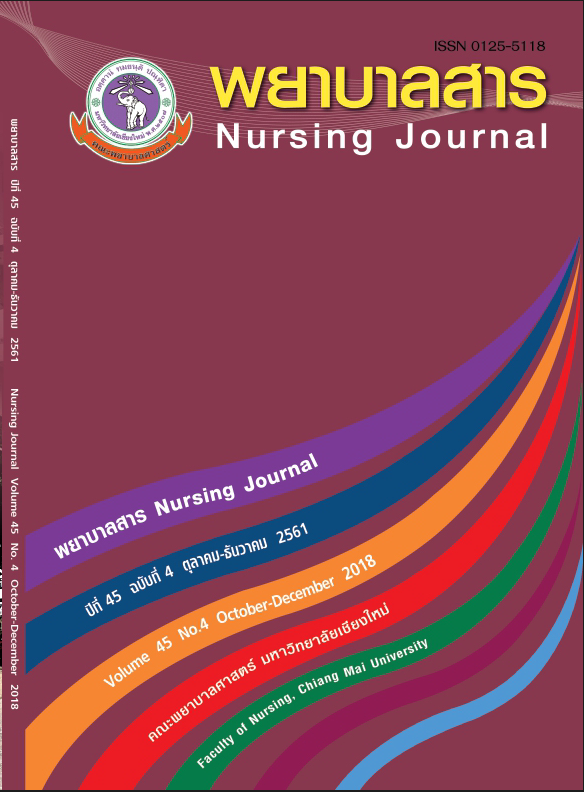Health Risk Status Related to Work among Firefighters in Nakhon Si Thammarat Province
Keywords:
Occupational Health Hazard, Health Status Related to Risk, Fire fightersAbstract
At work, firefighters are exposed to physical, chemical, biological ergonomic and psychosocial hazards that could affect their health status. The main purpose of this descriptive study was to examine health status related to risk at work among firefighters. The samples included 87 professional firefighters with at least six months of working experience. The data were collected using questionnaires in which both the content validity and reliability were confirmed. The data were analyzed using descriptive statistics.
The main findings revealed that the following factors we related to risk in terms of illness possibly related to exposure of occupational hazard, 1,work related stress (90.1%); 2.physical hazards such as exposure to heat (89.7%) 3.exposure to dust/smoke (86.2%) and 4.ergonomic hazards such as bending body position (87.4%). Concerning health status related to risk, it was found that the common health problems possibly related to exposure to occupational health hazard during the past six months included the stress of rushing to work (96.6%): burning and irritating eyes (93.1): excessive sweating, fatigue (87.4%) and lower back pain (78.2%)
The results of this study indicate that the nakhon si thammarat fire and rescue department including the related health team should consider the amount of workload of firefighters to reduce stress in the workplace. The well-being of firefighters and health promotion activities for prevention of occupational illness should be supported. Disseminating information regarding safety at work and health risk should be encouraged to reduce occupational illnesses or injuries related to work among firefighters.
References
Frost, D. M., Beach, T. A., Crosby, I., McGill, S. M. (2015). Firefighter injuries are not just a fireground problem. Retrieved from https://content.iospress.com/articles/work/wor2111.
Hellriegel,D., & Woodman,R. (2011). Stress management. Johannesburg: National Council for
Mental Health.
Hong, O., Chin, D. L., Phelps, S., Feld, J., Vogel, S. (2012). Occupational injuries, duty status, and factors associated with injuries among firefighters. Workplace Health & Safety, 60, 517-523.Google Scholar.
Reinhold,K., Tint,P., Tuulik,V., & Saarik,S. (2008). Innovations at Workplace: Improvement of
Ergonomics. Journal of Engineering Ergonomic; 5(60), 85-94.
Rogers, B. (1997). Health hazards in nursing and health care : An overview. American Journal of Infection Control, 25(3), 248-61.
Krejcie, R., & Morgan, D.W. (1970). Determining sample size for research activities. Educational
and Psychological Measurement, 30, 607-10.
Leka,S.,&Jain,A.(2010). Health impact of psychosocial hazards at work : An overview Retieved from http://apps.who.int/iris/bitstream/handle/10665/9789241500272_eng.pdf.
Moore-Merrell, L., Zhou, A., McDonald-Valentine, S., Goldstein, R., Slocum, C. (2008).
Contributing factors to firefighter line-of-duty injury in metropolitan fire departments in the Washington, DC: International Association of Firefighters.
Nipaspong K., Kalampakorn S., & Satitvipawee P., (2014). Factor related to health status of
firefighters in bangkok. Public Health Nursing Journal; 28(3), 99-111. (In Thai)
National Fire Protection Association. (2014). Number of fires by type of fire. Author. Retrieved from http://www.nfpa.org/news-and-research/fire-statistics-and-reports/fire- statistics/fires-in-the- us/overall-fire-problem/number-of-fires-by-type-of-fire Google Scholar.
National Institute for Occupational Safety and Health. (2016). A Summary of a NIOSH fire fighter fatallity investigation. Retrieved from https://www.cityofboston.gov/fire/pdfs /nioshbeacon.pdf.
Poplin GS, Harris RB, Pollack KL, Peate W, Burgess JL. (2012). Beyond the Fire ground: Injuries
in the fire service. Retrieved from https://www.ncbi.nlm.nih.gov/pubmed/22117024.
Reichard AA , Jackson LL.,(2010).Occupational Injuries Among Emergency Responders, American journal of industrial medicine 53:1–11.
Stephanie M. Phelps, Dana C. Drew-Nord, Richard L. Neitzel, Margaret I. Wallhagen, , Michael N. Bates, , Oi Saeng Hong,(2017) Characteristics and Predictors of Occupational Injury Among Career Firefighters, Workplace Health and Safety , Retrieved from http://journals.sagepub.com/doi/abs /10.1177/2165079917740595.
Downloads
Published
How to Cite
Issue
Section
License
บทความที่ได้รับการตีพิมพ์เป็นลิขสิทธิ์ของวารสารพยาบาลสาร
ข้อความที่ปรากฏในบทความแต่ละเรื่องในวารสารวิชาการเล่มนี้เป็นความคิดเห็นส่วนตัวของผู้เขียนแต่ละท่านไม่เกี่ยวข้องกับมหาวิทยาลัยเชียงใหม่ และคณาจารย์ท่านอื่นๆในมหาวิทยาลัยฯ แต่อย่างใด ความรับผิดชอบองค์ประกอบทั้งหมดของบทความแต่ละเรื่องเป็นของผู้เขียนแต่ละท่าน หากมีความผิดพลาดใด ๆ ผู้เขียนแต่ละท่านจะรับผิดชอบบทความของตนเองแต่ผู้เดียว






